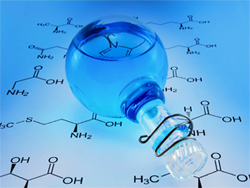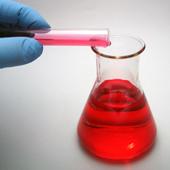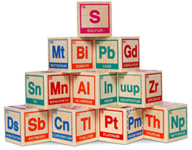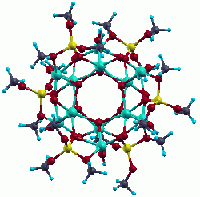About the Leather Industrial Chemical Substances
1. Lubricants The materials used in lubricating leather are as follows: 1. Fats and oil (animal and vegetable-based) 2. The sulfate, sulphonate, oxidation, hydrogenation and fragmentization products 3. Candles and derivatives 4. Natural resins 5. Petroleum fractions 6. Synthetic lubricants 7. Lubrication inactive ingredients (emulsifiers)
 This grouping is based on the raw materials of the lubricants and their structures are inclined as chemical.
Another grouping is natural-based and synthetic-based lubricants.
In terms of technique, they are divided into lubricants that can be emulsified and cannot be emulsified.
Depending on the production methods of the lubricants, they can be grouped as sulfate, sulfone, sulfite, sulphochloride, ethoxylated and etc.
This grouping may be informative in some cases in terms of using techniques.
For example: the sulfate oil adheres to the surface, they do not have electrolyte stabilities, the ethoxylated products are non-ionic characters and alike.
The lubricants can be grouped according to their ionic types as anionic, cationic and non-ionic.
For practical purposes, the oils are subjected to separation in terms of their important features such as light fastness, emulsion stability, lubrication effect,
cross-sectional lubrication – surface-lubrication, oil distribution and extractability.
Another grouping is researched as lubricants containing emulsifier and lubricants not containing emulsifier (anionic, cationic, amphoter and non-ionic).
This grouping is based on the raw materials of the lubricants and their structures are inclined as chemical.
Another grouping is natural-based and synthetic-based lubricants.
In terms of technique, they are divided into lubricants that can be emulsified and cannot be emulsified.
Depending on the production methods of the lubricants, they can be grouped as sulfate, sulfone, sulfite, sulphochloride, ethoxylated and etc.
This grouping may be informative in some cases in terms of using techniques.
For example: the sulfate oil adheres to the surface, they do not have electrolyte stabilities, the ethoxylated products are non-ionic characters and alike.
The lubricants can be grouped according to their ionic types as anionic, cationic and non-ionic.
For practical purposes, the oils are subjected to separation in terms of their important features such as light fastness, emulsion stability, lubrication effect,
cross-sectional lubrication – surface-lubrication, oil distribution and extractability.
Another grouping is researched as lubricants containing emulsifier and lubricants not containing emulsifier (anionic, cationic, amphoter and non-ionic).
 2. Non-Emulsifier Lubricants
2.1 Esters
2.2 Fatty Alcohols
2.3 Oxidation Products
2.4 Chlorinated Products
2.5 Hydrocarbons
2. Non-Emulsifier Lubricants
2.1 Esters
2.2 Fatty Alcohols
2.3 Oxidation Products
2.4 Chlorinated Products
2.5 Hydrocarbons
 3. Lubricants Not Containing Emulsifier
3.1 Anionic Lubricants
3.2 Cationic Lubricants
3.3 Amphoter Lubricants
3.4 Non-ionic Lubricants
3. Lubricants Not Containing Emulsifier
3.1 Anionic Lubricants
3.2 Cationic Lubricants
3.3 Amphoter Lubricants
3.4 Non-ionic Lubricants
 4. Water Resistant (hydrophobic) Substances
4.1 Non-ionic Tensity
4.2 Monocarboxylic Acids
4.3 Polycarboxylic Acids
4.4 Metal Complexes
4.5 Organic Silicium (Silicon) Compounds
4.6 Organic Fluorine Compounds
4. Water Resistant (hydrophobic) Substances
4.1 Non-ionic Tensity
4.2 Monocarboxylic Acids
4.3 Polycarboxylic Acids
4.4 Metal Complexes
4.5 Organic Silicium (Silicon) Compounds
4.6 Organic Fluorine Compounds




